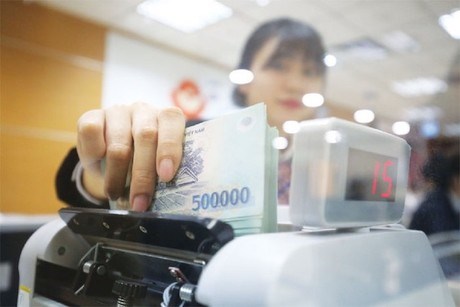Keeping NPLs ratio below 3 percent a challenge: experts
The COVID-19 pandemic is weighing on the banking system’s non-performing loans (NPLs), requiring significant efforts to keep NPLs ratio below 3percent by the end of this year as targeted by the Government.
 The COVID-19 pandemic is challenging the goal of keeping bad debt ratio at below 3 percent at the end of this year. (Photo: thoibaokinhdoanh.vn)
The COVID-19 pandemic is challenging the goal of keeping bad debt ratio at below 3 percent at the end of this year. (Photo: thoibaokinhdoanh.vn)Hanoi (VNS/VNA) - The COVID-19 pandemic is weighing on the banking system’s non-performing loans (NPLs), requiring significant efforts to keep NPLs ratio below 3percent by the end of this year as targeted by the Government.
Tran Du Lich, a member of the National Financial and Monetary Policy Advisory Council, said the increase in bad debts was unavoidable because of the pandemic. However, it was necessary to keep NPLs ratio at a reasonable level, Lich said, adding that bad debts would negatively affect credit flow.
According to the State Bank of Vietnam, the pandemic pushed up NPLs ratio. Statistics showed that on-balance sheet NPLs ratio was estimated at 1.8 percent at the end of June.
In the scenario that the gross domestic product (GDP) expanded at four percent this year, on-balance sheet NPLs ratio was forecast at 2.41 percent by the end of this year, 0.78 percentage point higher than the end of 2019. If GDP expanded at five percent this year, the ratio of on-balance sheet NPLs would be at 2.16 percent, 0.5 percent higher.
Experts predicted that the Government’s target of keeping bad debt ratio, including on-balance sheet NPLs of credit institutions, bad debts sold to the Vietnam Asset Management Company (VAMC) and debts that had implemented debt classification measures, below three percent would be challenging this year.
According to Do Hoai Linh, Director of the Finance and Banking Institute, the goal seemed impossible because COVID-19 was weighing on the socio-economic development. Linh predicted the NPLs ratio would be around four percent this year.
Can Van Luc from BIDV Training and Research Institute predicted on-balance sheet NPLs ratio at four percent, more than twice higher than the end of last year due to anticipated low credit growth and struggling business.
Luc said the total ratio of NPLs, including on-balance sheet, sold to VAMC and debts classified, could amount up to six percent of the total outstanding loans, 1.5 times higher than the end of 2019.
The central bank said that struggling business and production were affecting revenues and asset quality of credit institutions.
The banking sector was on the way to keeping NPLs ratio below 3 percent by the end of this year but the pandemic posed a significant challenge.
Global and domestic economic uncertainties, coupled with unpredicted development of African swine fever, natural disasters and diseases were also challenges in controlling bad debts.
As bad debts mainly stayed at weak credit institutions, the central bank said focus would be placed on restructuring these credit institutions following the market mechanism and the principle of ensuring rights of depositors and maintaining the system’s stability and safety.
On-balance sheet NPLs ratio has been kept at below three percent during the past four years, specifically 2.46 percent in 2016, 1.99 percent in 2017, 1.91 percent in 2018 and 1.63 percent in 2019./.













